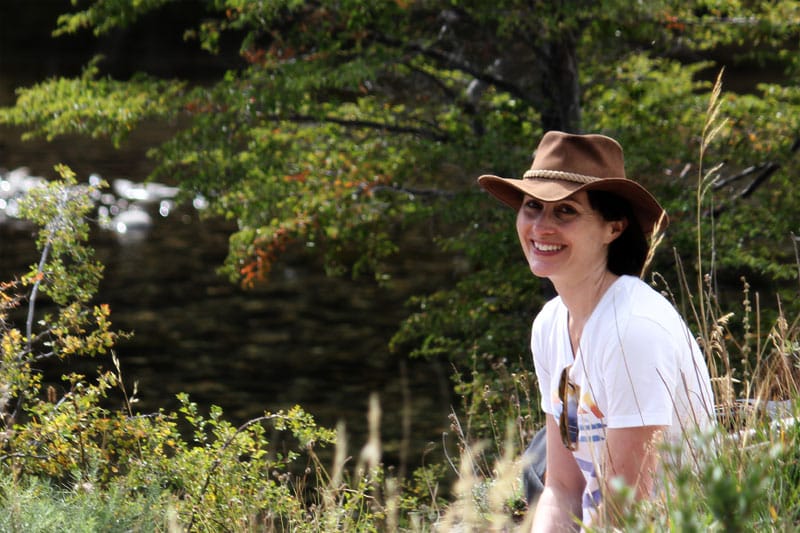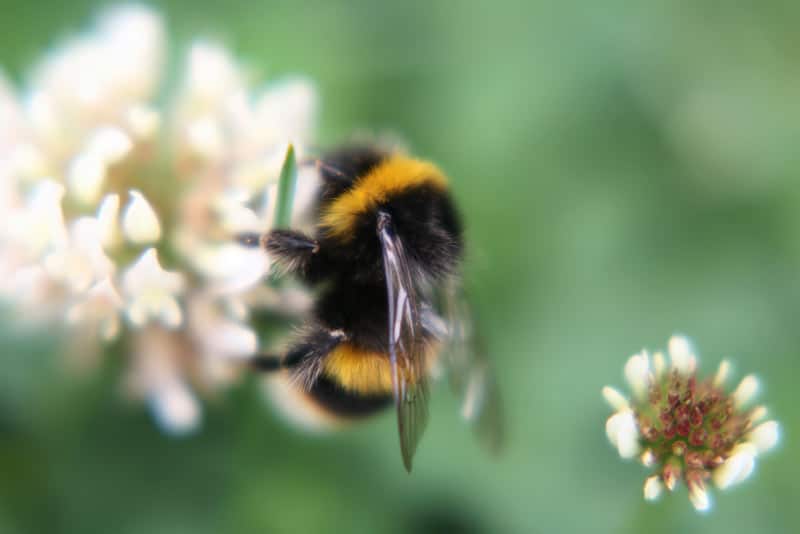
GiGL’s Board of Directors are central to our work and our success. Their commitment and expertise helps guide GiGL and keeps us moving forward and developing. Directors are on the front line of biodiversity and open space work in the capital. They are GiGL service users and contribute to our data banks, as well as serving as ambassadors for GiGL.
Saskie Laing is our second Director interviewee. She has a wealth of London conservation knowledge and worked as an inspirational biodiversity officer for a London borough before relocating to the US Virgin Islands. She carries out her role as GiGL Director remotely from this tropical paradise.
Town or countryside?
Countryside.
Summer or winter?
Summer.
Early bird or night owl?
Early bird.
Outdoor or indoors?
Outdoors. But I really enjoy indoors when it’s cold outside!
Plants or animals?
Animals.
What species is closest to your heart and why?

Bumble bee | © Mandy Rudd
Most macro invertebrates (except scorpions, which I’m not a massive fan of … just something irrational!). I love watching them. Social insects fascinate me and I love to ponder how some invertebrates seem to stick it out against all odds and pop up in the least expected places. For example Microlestes minutus, which has only been recorded six times in the U.K., popped up on a London green roof. Ultimately, the group (I couldn’t decide on a species) closest to my heart is the humble bumblebee; clumsy, charismatic and captivating. How can anyone not love them?
What is your favourite Greater London open space and why?
Holland Park. I find a sense of peace while walking in the woodland there.
What’s your first environmental memory?
I grew up in rural Devon and was always outside, but there’s one memory that stands out. I remember being quite little and coming across a common toad on the steps of our house. My parents let me hold it and ‘help’ it into the plants at the bottom of the steps. To me it was a giant, filling both hands; I was so happy to have helped it to a safe place.
What was your first environmental job?
My first proper job was as a research assistant on the GM farmscale project. I carried out invertebrate and plant surveys at sites across England, then spent hours sorting pitfall traps, counting seeds and collembola (springtails) back in the lab.
What did you learn then that you keep with you today?
That teamwork and hard graft is the only way to get things done. And that fieldwork isn’t all glamorous!
Who or what inspires you?
I’ve been very fortunate to work in some amazing places in the world and I’ve been inspired by the people who I’ve met, who have devoted their lives to front line conservation efforts. One example is anti-poaching wardens. They often work in tough conditions, with little or no pay and against the odds. Their passion is contagious and motivation is inspirational. These people aren’t about getting credit, just simply protecting species or habitats.
What might someone be surprised to learn about you?
I sometimes regret not becoming an engineer. I think I would have been good at it. Plus, I like to think I would have become an environmentally aware engineer.
How did you first get involved with GiGL?
In London, the borough I worked for had a service level agreement (SLA) with GiGL. The work GiGL did just made perfect sense to me. I maximised our use of our SLA and really enjoyed working with the GiGL team to find solutions and ways to use our data more effectively. I’ve been a passionate supporter of GiGL since then.
What do you think are the biggest challenges and opportunities for London boroughs to support biodiversity?
I think one of the main challenges is the need for a coherent long-term biodiversity strategy for Greater London, one which addresses scale and connectivity. London boroughs could then feed into this strategy. This needs to be more than words on paper, its needs interactive and accessible mapping to help guide biodiversity efforts by organisations working across the capital. Another challenge is the lack of awareness about biodiversity matters within boroughs. Often, the borough ecologist is a lone voice and there’s a need for more cohesive working between teams; biodiversity, environmental, planning, project teams etc.; to find creative ways of addressing biodiversity issues. Unfortunately, with budgets and staff resources being stretched to the max, this is a massive challenge for the future. I don’t think it’s all doom and gloom, there are lots of opportunities, and GiGL’s amazing staff are creating new ways of working and developing resources to meet the needs of London boroughs. By having a service level agreement with GiGL, and by communicating with the GiGL staff, not only does your data become useful throughout London but it can become more useful within your own borough too. GiGL can really help to communicate data and help to address issues dealt with by other teams, not just by biodiversity officers: issues such as community awareness, land management, planning policy, green infrastructure, strategic planning, etc. We have great data for London and every borough department should be using it on an everyday basis to make decisions.
